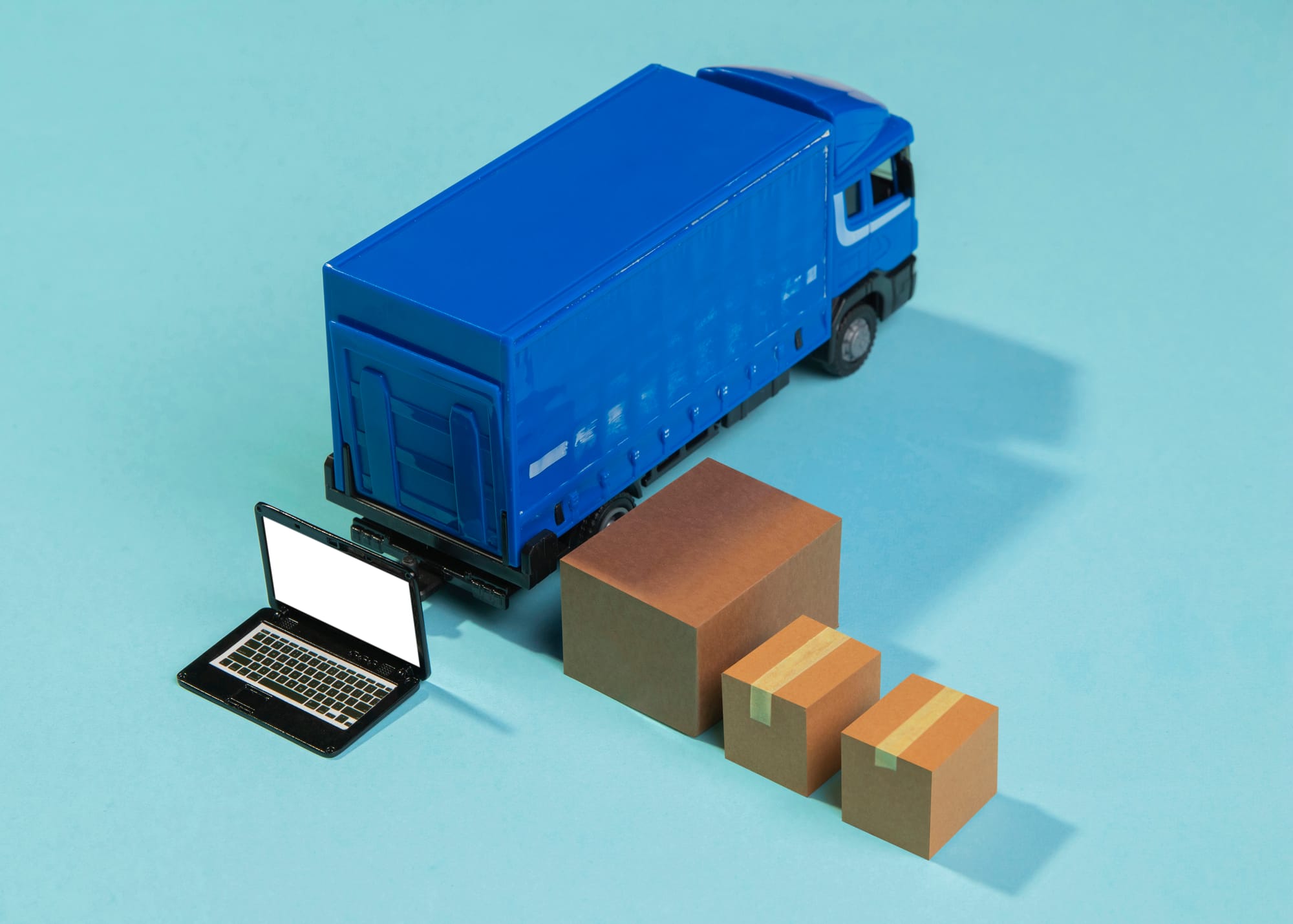Logistics
Key features to look for in a modern TMS to future-proof your fleet

Introduction
The supply chain is a vast and complex field that develops fast, with high-end customer expectations. TMS has appeared as a pivotal tool for managing logistics and fleet operations. A TMS allows organizations to plan, execute, and optimize the transport of goods, thereby providing real-time visibility, cost control, and improved service levels.
The current trends in the global market further underscore the significance of TMS. The market was valued at USD 15.88 billion in 2024 and is projected to experience a compound annual growth rate of 17.5% from 2025 to 2030. This growth is primarily driven by the increasing adoption of e-commerce, technological advancements, and the growing demand for efficient transportation solutions.
Key features to look for in a modern TMS to future-proof your fleet
Many companies have already implemented TMS into their operations. However, with the fast development of logistics, TMS needs constant upgrades and the implementation of new features. This article will cover key features to look for in a modern TMS to future-proof your fleet.
1. Cloud-based architecture
A cloud-based TMS enables companies to plan, track, and optimize freight operations all in one place. It replaces bulky, expensive on-premise systems with flexible, real-time logistics management accessible from anywhere.
Key benefits:
- Monitor shipments live, reroute around delays, and keep customers informed.
- Generate invoices and customs forms, and stay compliant — no manual paperwork needed.
- Connects easily with ERP, CRM, and WMS systems to sync operations.
- 18–25% ROI increase within 12 months.
- Top-tier encryption, regular backups, and multi-layered protection..
Cloud TMS vs. On-Premise
2. Shipment tracking and notifications
Real-time tracking and notifications in TMS are necessary to reduce delivery issues, improve customer communication, and create a more responsive supply chain. The good news? You don't need to pay to make a new system; it can be a new layer for the exciting TMS.
Upgrading your TMS with real-time shipment tracking and automated notifications begins with identifying gaps in your current system, such as reliance on manual check calls or lack of visibility. The next step involves using APIs to integrate live data sources, including GPS, ELDs, IoT devices, or third-party visibility platforms like project44 and FourKites.
Once these integrations are in place, you can configure automatic alerts for key milestones, such as pickups, deliveries, delays, or geofence triggers. These notifications can be sent via email, SMS, or customer portals, which improves transparency and response time. Additionally, you can add a live dashboard to the TMS, providing teams and clients with real-time visibility.
After thorough testing and staff training, the upgraded system can go live.
3. Advanced analytics and reporting
In 2025, reporting and analytics tools will no longer be optional; they will turn raw logistics data into actionable insights that help businesses optimize routes, reduce costs, and improve service levels.
Modern TMS platforms use real-time GPS, ELDs, ERP systems, and carriers' data to generate detailed dashboards and predictive reports. Logistics teams can monitor key performance indicators (KPIs) like on-time delivery rates, dwell times, fuel usage, and cost-per-shipment, down to the lane or carrier level.
According to APQC (2024), companies using data-driven TMS solutions saw a 27% improvement in delivery performance and a 22% reduction in transportation costs within the first year.
4. AI & ML integration
The future of TMS is fully autonomous. We are joining the era where AI assists, optimizes, and automates the logistics network in real time. With advancements in autonomous vehicles, the IoT, blockchain technology, and 5G, AI-driven TMS platforms will change supply chain management.
Next-generation systems will manage end-to-end logistics — from procurement to final delivery — while dynamically adapting to weather, traffic, and demand changes without human input. Predictive models will forecast disruptions and automatically adjust routes, inventory, and carrier assignments. Combining IoT tracking and blockchain verification, every shipment will become fully traceable, secure, and self-regulating.
5. Multimodal transportation management
Global supply chains are now more complex and unstable. Disruptions have increased by 183% since 2019, costing businesses about $1.6 trillion in lost revenue annually. More innovative logistics are essential with growing customer expectations, limited capacity, and changing freight rates.
A multimodal TMS can help. Unlike single-mode tools, a multimodal TMS allows businesses to plan, track, and manage shipments by road, rail, air, and sea — all in one place. It provides real-time visibility, automates tasks, optimizes routes based on cost and performance, and helps companies respond quickly to disruptions.
A modern TMS helps control costs and meet regulations. It uses AI for better analytics and tracking, reduces manual work, and removes blind spots, making the supply chain more nimble and resilient. For businesses facing uncertainty in 2025, a multimodal TMS is helpful and necessary for staying competitive.
6. Integration with other enterprise systems (ERP, CRM, API-based integration)
Connecting a TMS with key business platforms like ERP and CRM systems is vital. In 2025, this integration is more critical, as it allows for real-time data sharing, reduces manual errors, and helps with better decision-making in the supply chain.
Using APIs for integration allows smooth communication between TMS and other business systems. According to SyncMatters, API integration increases automation, scalability, and error reduction, making business processes more effective.
The CRM market is expected to reach $163.16 billion by 2030, with an annual growth rate of 14.6% from 2025 to 2030. By connecting TMS with CRM systems, businesses can improve customer service. This setup provides real-time shipment updates and allows for personalized communication.
Linking TMS with ERP systems improves financial visibility and simplifies processes like invoicing and purchasing. This comprehensive approach ensures logistics operations support overall business goals, leading to better performance and greater customer satisfaction.
7. Mobile access
Modern logistics can’t survive without adapting to various devices, so mobile integration is vital for a Transportation Management System (TMS). It enables dispatchers, drivers, and operations teams to manage shipments, receive updates, and address issues from any device — anywhere, at any time.
With mobile-compatible dashboards and apps, logistics teams can:
- Track shipments in real time
- Receive push notifications for delays or exceptions
- Assign loads and update statuses on the go
- Communicate directly with drivers and carriers
Over 58% of supply chain professionals now rely on mobile solutions for daily logistics operations, and companies that enable mobile TMS access report 21% faster response times to in-transit issues.
Preparing your fleet for the future
The logistics industry is now data-driven and developing fast. A TMS is now an essential tool that needs to be upgraded regularly, not just for back-office tasks but as a strategic asset. With features like cloud flexibility, real-time tracking, AI-powered automation, and support for multiple transport modes, a good TMS helps logistics teams work faster, smarter, and more effectively.
Connecting your TMS with other business systems, allowing mobile access, and using advanced data analysis are paramount for staying relevant in 2025 and beyond. Whether you want to lower costs, improve customer satisfaction, or handle global disruptions, a reliable TMS turns logistics challenges into competitive advantages.
